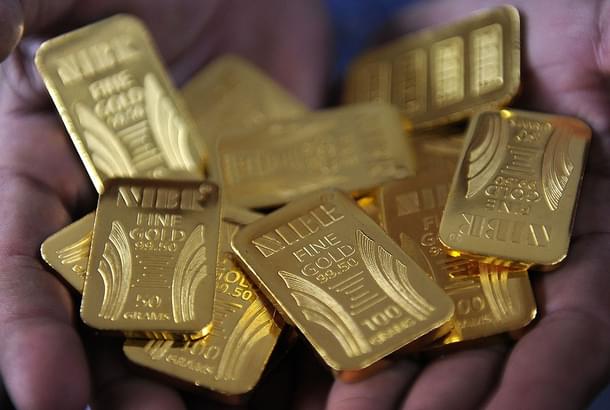Insta
Government Makes Gold Hallmarking Mandatory From January; To Bring Trust Back To Gold Industry
IANS
Nov 30, 2019, 01:52 PM | Updated 01:52 PM IST
Save & read from anywhere!
Bookmark stories for easy access on any device or the Swarajya app.


Union Consumer Affairs Minister Ram Vilas Paswan on Friday (29 November) announced that hallmarking of gold jewellery and artefacts will be mandatory from 15 January, 2020.
Addressing the media, Paswan said that hallmarking of gold jewellery and artefacts is being made mandatory in India for which a notification will be issued by the Department of Consumer Affairs and a period of one year will be given for implementation to ensure that new assaying and hallmarking centres will be set up by private entrepreneurs at locations where demand of gold jewellery and artefacts arises.
Jewellers will also get a year's time for completion of their registration process and retailers also would have a year to clear their existing stocks.
The minister said that hallmarking will benefit the poor people in villages and small towns who are not able to make out the purity of gold they have been buying.
The Bureau of Indian Standards Act 2016 has enabling provisions under Section 14 and Section 16 for making hallmarking of gold jewellery and artefacts mandatory by the Central government. This will make it compulsory for all the jewellers selling gold jewellery and artefacts to register with the BIS and sell only hallmarked gold jewellery and artefacts, an official statement said.
The BIS Act 2016 has been implemented with effect from 12 October, 2017 and BIS Hallmarking Regulations 2018 notified with effect from 14 June, 2018. BIS has been running a hallmarking scheme for gold jewellery since April 2000. As on 31 October 2019, there were 877 assaying and hallmarking centres spread in 234 district locations across the country and so far 26,019 jewellers have taken BIS registration, as per the statement.
The World Gold Council (WGC) welcomed the move and said that it would benefit both the consumers and traders alike.
Somasundaram P.R., Managing Director, India, WGC said: "This is an excellent step in the right direction, a long overdue policy action. It will bring trust back to the gold industry, benefiting consumers and trade alike. It will change the image of the Indian gold industry and enable it to market our famed jewellery handcrafting skills in an environment of trust and transparency."
"Mandatory hallmarking would lead to more jobs in assaying and purity verification which in turn will support the gold monetisation scheme, he said adding that the period of one year to transition takes into account business realities and is very supportive of trade.
The decision however received concerned reactions from the market as market players say India significantly lags in terms of assaying and hallmarking centres.
Speaking to IANS, jewellery trader and former Chairman of the All Indian Gems and Jewellery Federation Chairman, Bachhraj Bamalwa said: "Although there is not going to any major impact on the market because most of the jewellers in the metro cities carry out hallmarking, there will be issues in the three tier and four tier cities as there are no hallmarking centres. Traders in small cities will find it tough to get their jewellery stock hallmarked, as the reach of the hallmarking centres is quity low."
"Government should take the industry into confidence in order to make the law," Bamalwa said.
Regarding the impact on prices, the Kolkata-based jeweller, however, said that there is unlikely to be any impact on prices as hallmarking of one gold item costs "only around Rs 40" and traders would be able to afford it.
(This story has been published from a wire agency feed without modifications to the text. Only the headline has been changed.)





